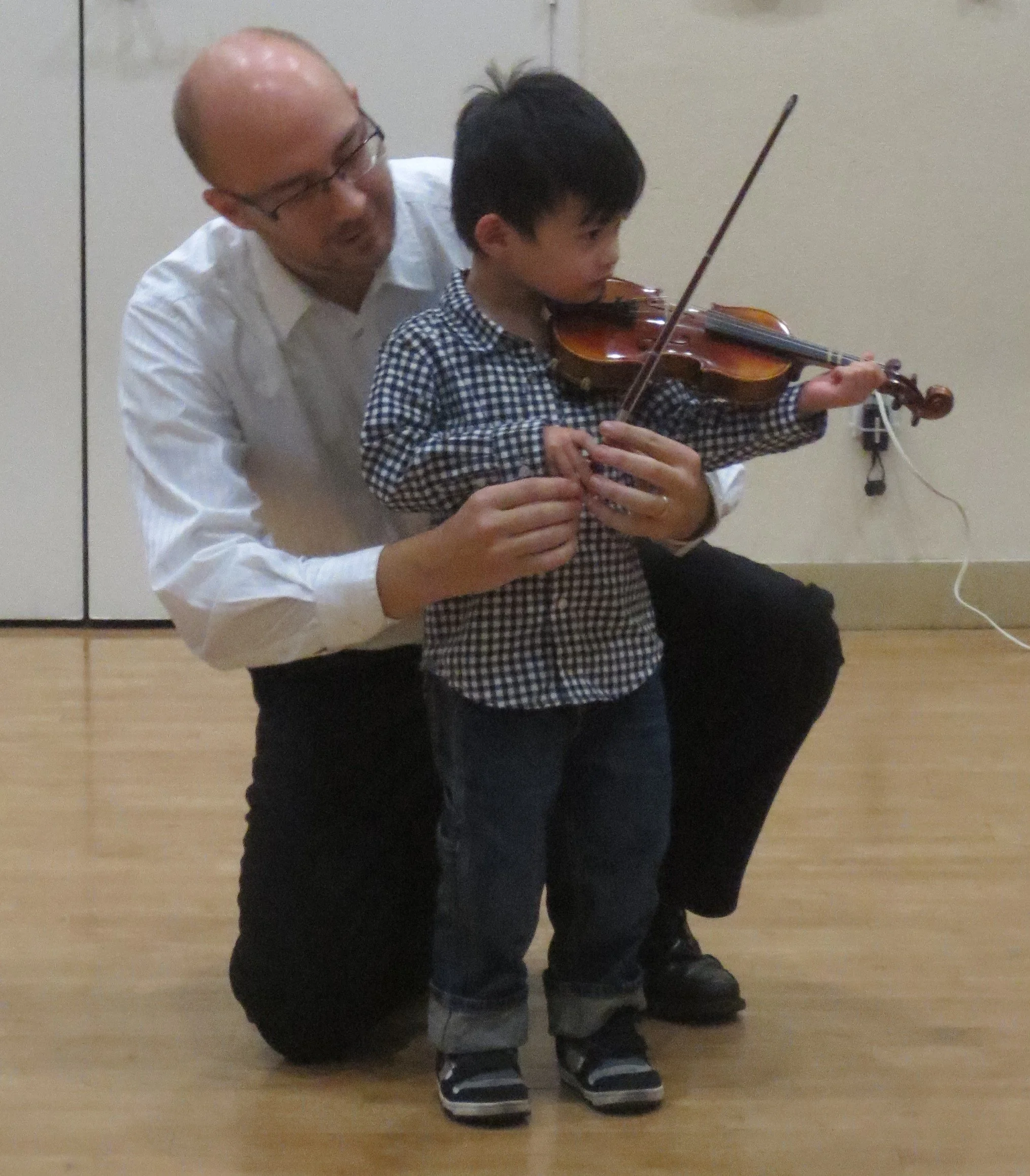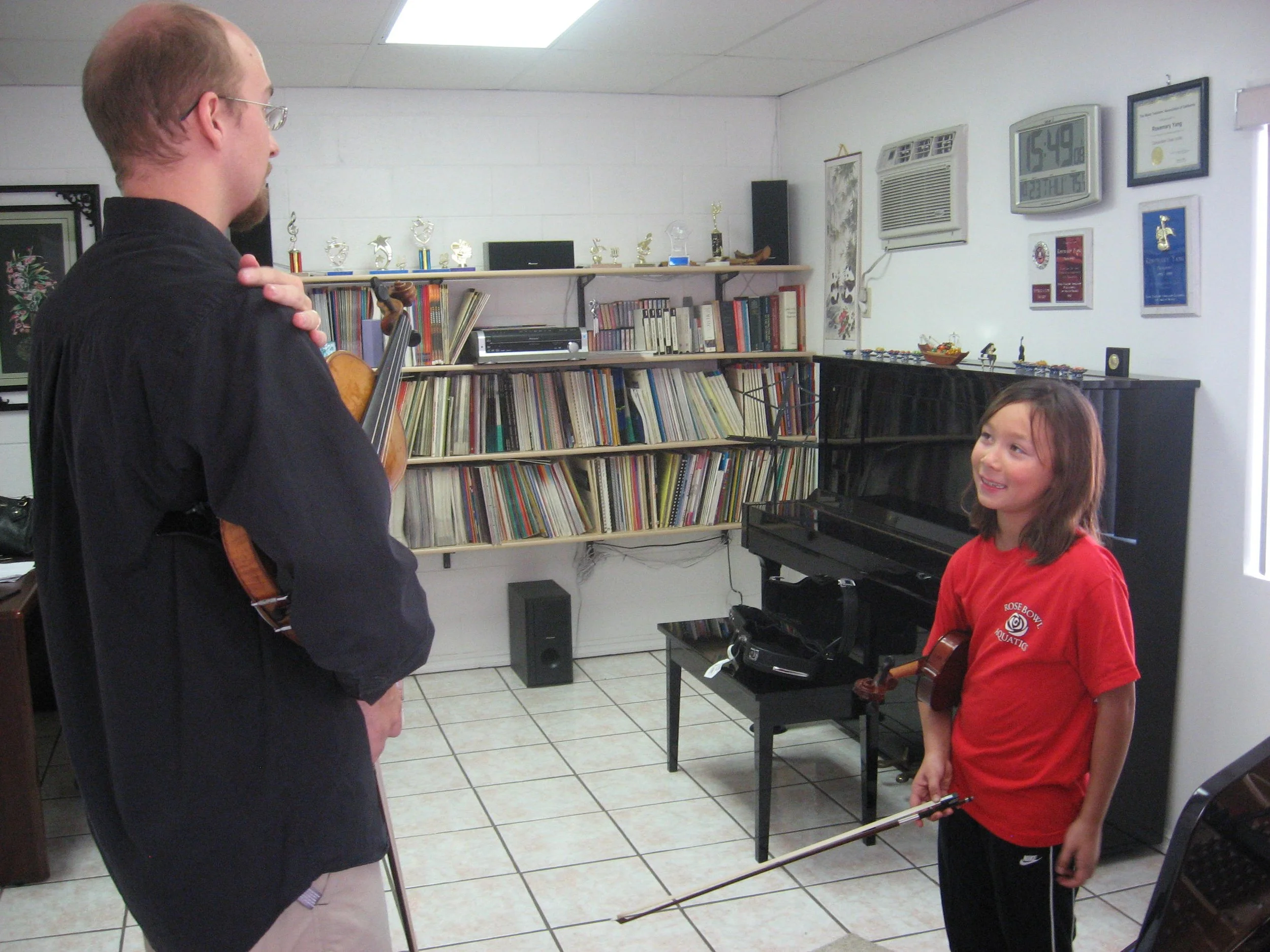The Suzuki Method
Mr. Ben’s lens on the philosophy and its implementation
Every child can learn
“Musical ability is not an inborn talent but an ability which can be developed. Any child who is properly trained can develop musical ability, just as all children develop the ability to speak their mother tongue. The potential of every child is unlimited.”
– Dr. Suzuki
A holistic perspective - the “Mother-Tongue” method and the Suzuki Triangle
“Teaching music is not my main purpose. I want to make good citizens. If children hear fine music from the day of their birth and learn to play it, they develop sensitivity, discipline and endurance. They get a beautiful heart.”
– Dr. Suzuki
In the same way that an infant learns to speak its mother tongue by being constantly surrounded by it and lovingly encouraged to speak it, despite infantile mistakes and misunderstandings, so too can parents create the conditions for such easy and natural uptake of musical skills in children. Surrounding the student in a loving and encouraging environment, never belittling mistakes and struggles, and providing constant opportunities to hear, enjoy, and participate in the making of music, will result in a student happy to devote their energy to learning musical skills. During this learning process, students will also develop a compassionate heart and the ability to listen carefully to others.
Dr. Suzuki envisioned the relationships involved in learning musical skill as the points of a triangle. The student is at the top, with the parent and teacher working together to lift up the child. The teacher provides skilled and compassionate instruction, and the parent creates a loving, musical environment for the child.
Learning by ear
“Tone has a living soul.” – Dr. Suzuki
In the Suzuki Method, students learn pieces of music by repeated listening to recordings, rather than by reading sheet music. The focus is on developing the physical skills required with the instrument to emulate the beautiful tone and musicality of the professional recordings.
Music reading is a critical skill for a developing musician, but it is a completely different challenge compared to playing the instrument itself, and it is an unnecessary distraction for students in the beginning stages. The primary goal is building the foundational skills necessary to play with beautiful, powerful tone from the first note. Eventually music reading must catch up to technical ability, but only after the instrumental skills have reached a point secure enough that they will not be negatively affected by layering on the additional challenge of reading music.
Systematic progression and review of previous material
“Knowledge is not skill. Knowledge plus ten thousand times is skill.”
– Dr. Suzuki
Any complicated task can be more easily accomplished by breaking it down into component parts. The Suzuki Method presents skills in a highly structured order, laying a foundation of ability piece by piece. Each skill must be practiced correctly until it is mastered, and may then be combined with other skills, or added to. The goal is to allow the student to internalize the necessary skills easily and joyfully, and to avoid the struggles and frustrations that come when skills are added or combined too quickly. This starts with the most basic “pre-Twinkle” phase of holding the violin and bow properly, in order to facilitate ease of motion and powerful tone production. Dr. Suzuki meticulously wrote and compiled a set of pieces which gradually introduces more complex techniques, but always hidden in the context of beautiful music. This allows students to develop ability while making music, and avoids tedious, dry exercises which may seem irrelevant to a child.
There is always a seed present in simple music which later opens into more advanced techniques. Constant review of previous material is critical in order to solidify and broaden the foundation onto which students may add more complicated skills. It allows students to grow facility and a “feel” for the instrument. Review also provides students an opportunity to play simpler music with more advanced skill, and to recognize how far they have come.
Mr. Ben’s personal approach
“The Suzuki Method is not a fixed method, but is continuously progressing day by day. It is seeking better and newer ways to develop children’s abilities to a much higher level in a joyous natural atmosphere and in the easiest way possible.”
– Dr. Suzuki
The skills and music that every Suzuki violin student learns may be the same, but they all achieve them through their own unique process and personality. In every lesson, I am constantly adapting the pace and activities based on the student before me, seeking what each student needs on that day, whether they are ready to tackle a new skill, need the confidence boost of reviewing a familiar and beautiful piece, or simply need a musical or personal connection.
I’m always happy to discuss the Suzuki Method in more depth and to address the specific needs of your child via phone, e-mail, or in person.
For more information about the Suzuki Method, including a wealth of resources for parents, please visit the Suzuki Association of the Americas.


